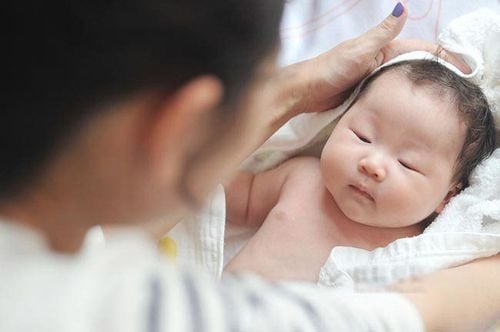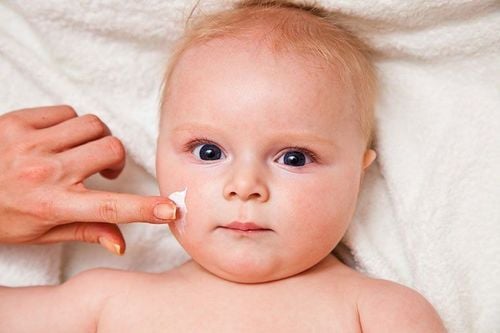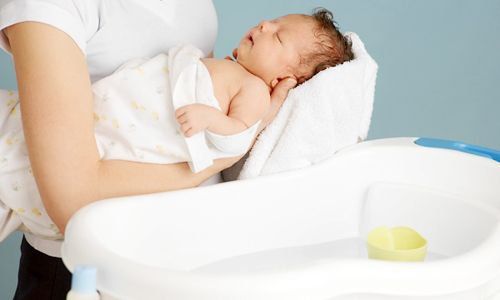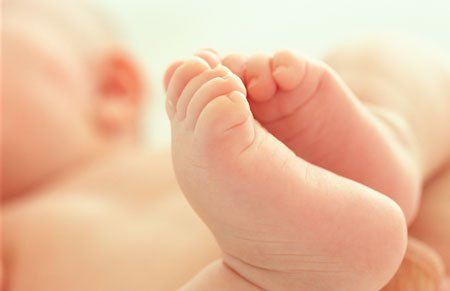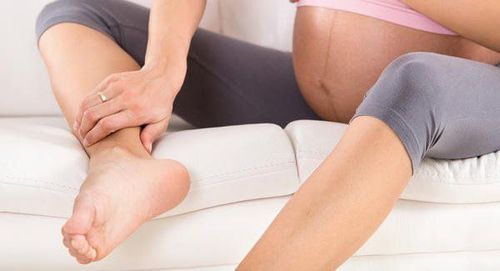This is an automatically translated article.
The layer of "causing" substance that covers the outside of the baby's skin in the first day of life has the role of retaining heat and protecting the baby's skin. Therefore, do not bathe to clean the "causing" substance on the baby's skin immediately after birth. From the second day on, this layer of "causing" substance is a very favorable environment for the possibility of skin infection. Therefore, 24 to 48 hours after birth, the baby must be bathed every day.1. Skin and navel care How to care for your baby's skin:
Bath water temperature: not more than 37°C Bath time: not more than 5 minutes. It is recommended to bathe the baby with cooled boiled water, not too hot above 37 degrees. You can use baby bath oil/green tea leaves, boiled bitter melon, extract the water mixed with boiled water to cool, or mix a little lemon juice in the hot season to prevent heat rash. Change diapers often, wash with clean water after each bowel movement. Umbilical Care:
Always keep your baby's navel as dry and clean as possible. Always wash your hands before caring for your baby's umbilical cord. Before the umbilical cord dries out and falls off the navel, be sure to keep your baby's diaper loosely covering the navel and belly to avoid anything that could hit the navel. To keep the umbilical cord dry you may have to be quite careful when bathing your newborn (bathe with warm water to prevent cord infection). Clean the abdomen around the navel with clean water and the baby's stump/umbilical cord at least once a day with a cotton swab dipped in 70 degree alcohol. Absolutely avoid using cotton umbilical cord bandage because the fibers from cotton wool often stick to the navel and can be difficult to remove, causing other complications to the navel. Do not use lotions, shampoos, or powders on or around your baby's navel. About 1-3 weeks after birth, your baby's umbilical cord will dry out and fall off naturally. When the umbilical cord falls off, some of the baby's navel will bleed. This makes young parents worried, but sometimes this is a normal phenomenon. Take your baby to the doctor if: + The umbilical cord is releasing any foul-smelling fluid.
+ The skin around the baby's navel area is infected.
+ If the child has a fever.
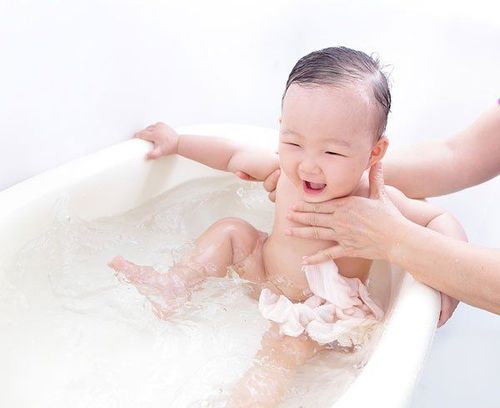
Có thể sử dụng dầu tắm trẻ em/lá chè xanh, mướp đắng đun sôi, chắt lấy phần nước hòa với nước đun sôi để nguội, hay hòa ít nước cốt chanh vào mùa nóng để phòng rôm sảy
In folklore, some leaves are often used to bathe children such as marjoram, bitter melon, green tea leaves, and diluted lemon juice, especially in the summer to avoid heat rash. There may be some cases where soap is still required to shower, especially when there is a risk of skin inflammation. In such cases we should choose soaps containing vegetable oil, coconut oil or palm oil or herbal extracts. Children's sterile soap is only used when the child has purulent dermatitis. Foam bath soap should not be used for young children because:
All kinds of bath foams for young children (may not have been imported to Vietnam) contain detergents. These substances can kill beneficial bacteria and damage the skin's protective acid layer. In addition, bath foam can cause genital and urinary tract infections in young children. Shampoo (shampoos)
Depends on the amount of hair of each baby to decide whether to use it or not. For babies who do not have a lot of hair, it is not necessary to use it in the first time. If you have decided to use a baby shampoo, choose a mild one. Identify this type by choosing products of famous brands specifically for newborns or reading the ingredients on the label: no fragrances, synthetic colors, preservatives that can cause skin irritation like quaternium 15, imidazolidyl urea, parapens...
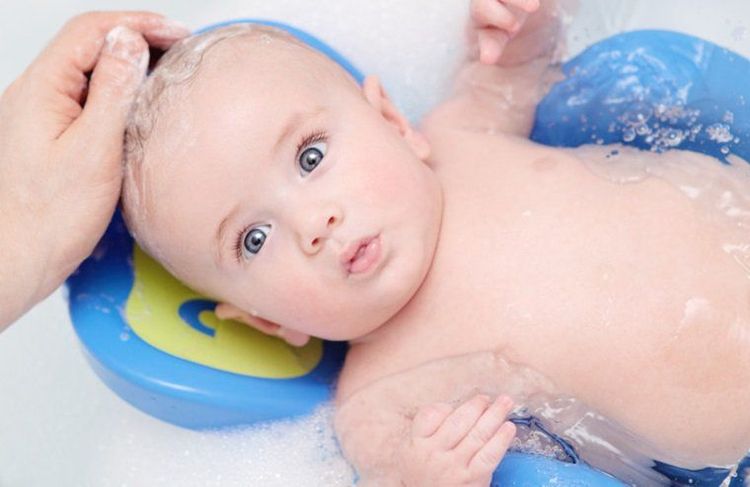
Nếu bạn đã quyết định dùng dầu gội đầu cho trẻ thì nên chọn loại nhẹ
But creams and oils used for baby massage can reduce skin irritation. But any product used for children must be free of mineral oils because it can cause skin irritation. Look for oils of herbal origin.
All these massage products are free from synthetic colors, fragrances, substances such as TEA, DEA.
Products of animal origin (sheep fat) must also have a guarantee from the manufacturer that they are free of pesticides (DT, lindane, diazinon...) because these substances can penetrate the baby's skin .
Powders
Most powders contain very small, scented ingredients that can irritate the skin.
You should only use a little powder to rub on some skin folds of the child such as neck, armpit, groin... (but not talcum powder). But that powder must be derived from grain flour, without fragrance.
People often treat baby's diaper rash with powder, but the best way is to avoid a diet high in proteins and avoid skin irritants that may be left on the same diaper you use for your baby. To do so, before closing for your baby, you should rub and shake the diaper by hand to avoid chemical residues on the diaper.
Should change the baby's diaper in time, wash with clean water after each stool, let it dry before closing the new diaper can be a good measure to reduce diaper rash. On the other hand, applying zinc oxide and chamomite to the diaper rash can soothe irritation, dryness and soften the baby's skin.




